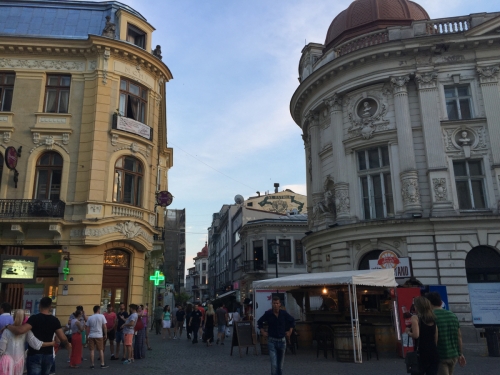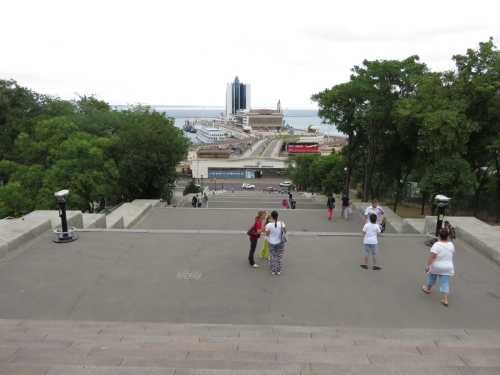Heading out of Transnistria, I took the old Moldovan-operated train that passes through the territory by special agreement for the 3 hour ride to Odessa, Ukraine.
Inside the train, where I got a lengthy shakedown from border officials (probably the silliest border crossing I’ve seen outside of Africa). Transnistria, interestingly, doesn’t have any border authority on the train itself; by agreement, its border guards can only harass passengers at the station–once they’re on the train, they’re in the hands of the Moldovans. So at least that takes care of the Transnistrian immigration!
Odessa’s train station, which is ornate enough to wow train station aficionados and regular folk alike.
The main dome in the station.
Odessa, a city of about a million, has architectural gems beyond a city of its population. Catherine the Great established the city to be the Saint Petersburg of the Black Sea.
The city’s opera house is its most celebrated building.
Right now you might be thinking…Ukraine? Isn’t there a war there right now?
Well, technically no–there’s a ceasefire. But, decent point nonetheless. As of June 2015, however, any conflict is hundreds of kilometers from Odessa, and the city is completely safe to visit.
It’s also gotta be among the cheapest places in the world right now. Ukraine’s currency, the Hryvnia, used to be at 8 to the dollar; now it’s 22! Price adjust to these changes gradually, especially for labor-intensive services tourists tend to use. (Prices for traded goods and branded products change fast, however; I peeped into Hugo Boss to see what their jeans ran, and it was still north of $300 US!)
One might be inclined to think you should avoid Ukraine right now; on the contrary, this is the time to go! Ukraine’s economy has been on the brink for a while, and tourist dollars are one of the surest ways to help.
Odessa’s monstrous Privoz Market, one of the largest in the former USSR.
Similar to Latin American markets, its borders are fuzzy, and its tentacles extend into the city in all directions.
Outside of the more refined center, Odessa definitely has its rough edges. It at no point felt dangerous; just a tad seedy at times.
Since Odessa’s role in the tourist world is mainly being a beach town for Ukrainians, Russians, and Belorussians, and it was cloudy and quite chilly the whole time I was there, I was left wandering the pleasant streets and leafy promenades.
The main pedestrian street.
Language was a little tricky–Ukrainian is a similar but distinct language from Russian, and given the conflict I wouldn’t want to offend anyone. But Odessa is largely Russian-speaking anyways, and I failed to discern a single word that wasn’t Russian. Eventually I just gave in and put my embarrassingly limited Russian vocabulary to use.
Odessa’s signature attraction (except for the beach, of course!) is the Potemkin Steps.
One morning I ran down and back up for exercise. Pretty tough!
At the bottom you’re treated to a view the of old port…
…and the rail yard! Perfect for someone like me.
And some wonderful Soviet architecture!


























[…] Flanking the Tomb is a monument for each of Russia’s Hero Cities of World War II. To the left, the Crimean city of Sebastapol; to the right, Odessa. […]
By: Red Square & the Kremlin: Moscow’s Wonders | Cape to Milan on June 25, 2015
at 10:58 pm